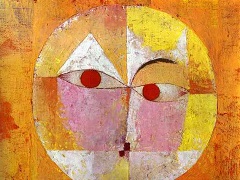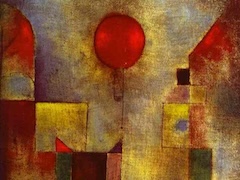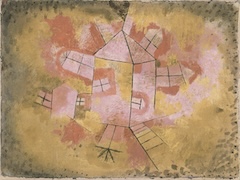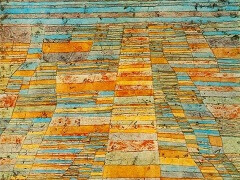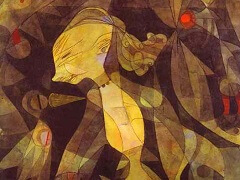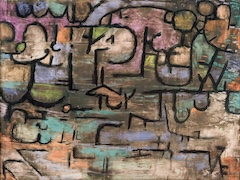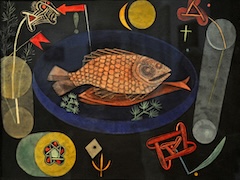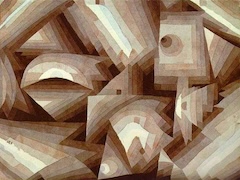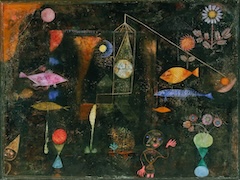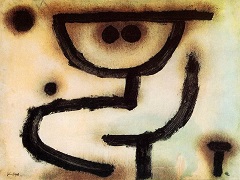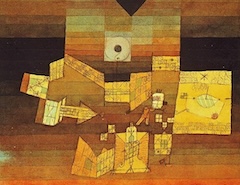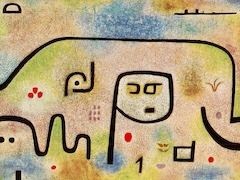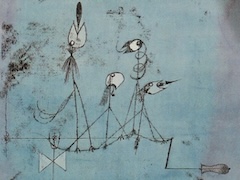Cat and Bird, 1928 by Paul Klee
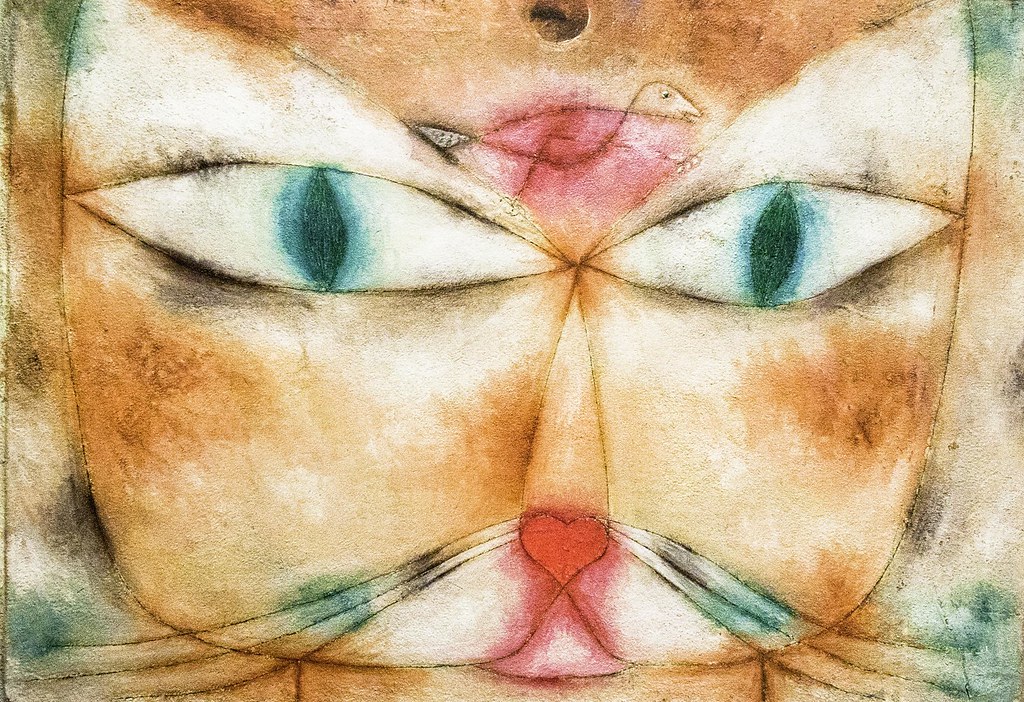
Klee was one of the many modernist artists who wanted to practice what he called "the pure cultivation of the means" of painting in other words, to use line, shape, and color for their own sake rather than to describe something visible. That priority freed him to create images dealing less with perception than with thought, so that the bird in this picture seems to fly not in front of the cat's forehead but inside it the bird is literally on the cat's mind. Stressing this point by making the cat all head, Klee concentrates on thought, fantasy, appetite, the hungers of the brain. One of his aims as an artist, he said, was to "make secret visions visible."
The cat is watchful, frighteningly so, but it is also calm, and Klee's palette too is calm, in a narrow range from tawny to rose with zones of bluish green. This and the suggestion of a child's drawing lighten the air. Believing that children were close to the sources of creativity, Klee was fascinated by their art, and evokes it here through simple lines and shapes: ovals for the cat's eyes and pupils (and, more loosely, for the bird's body), triangles for its ears and nose. And the tip of that nose is a red heart, a sign of the cat's desire.

